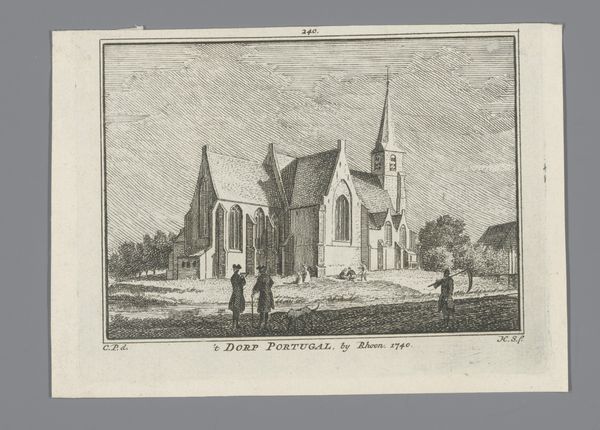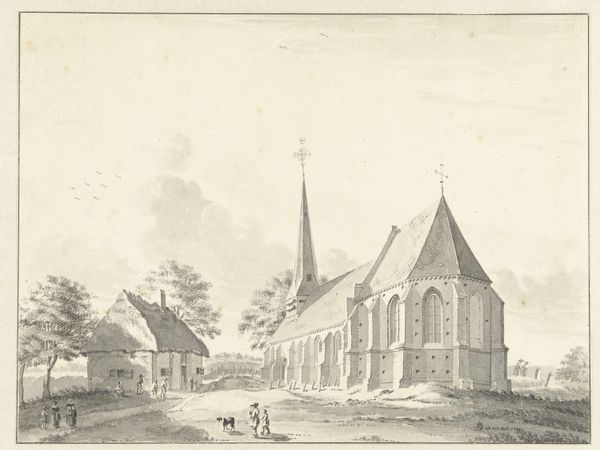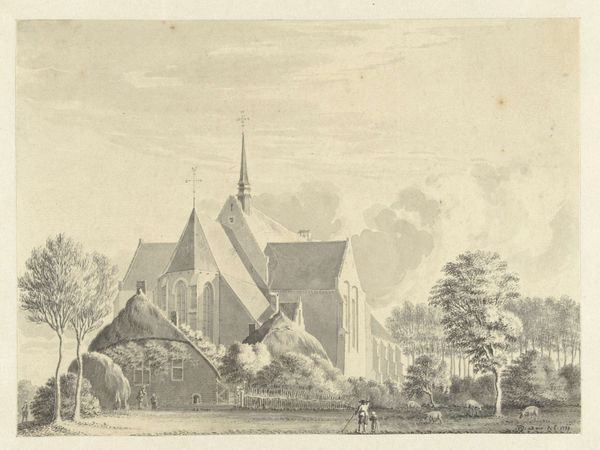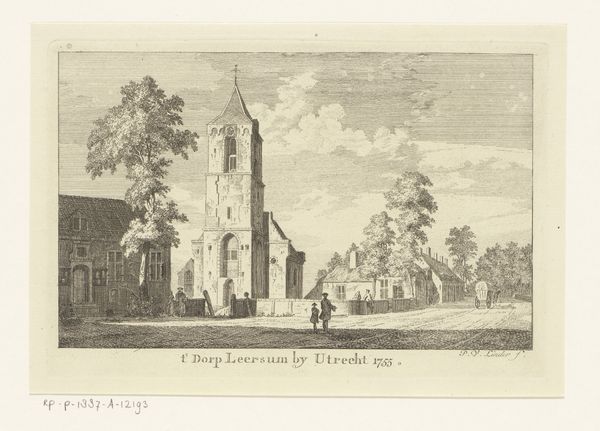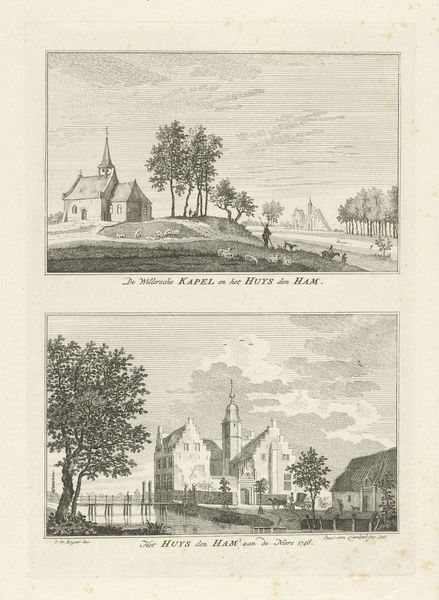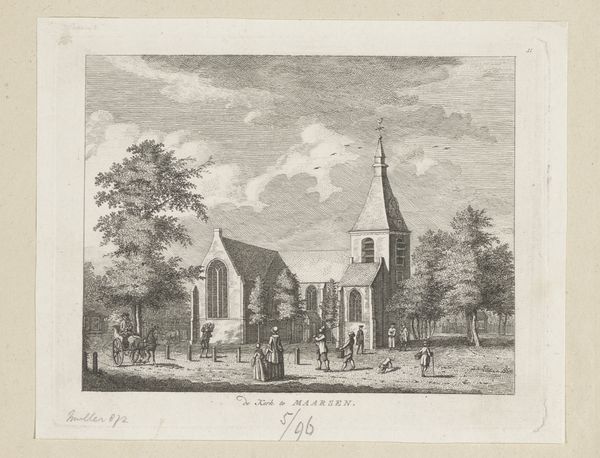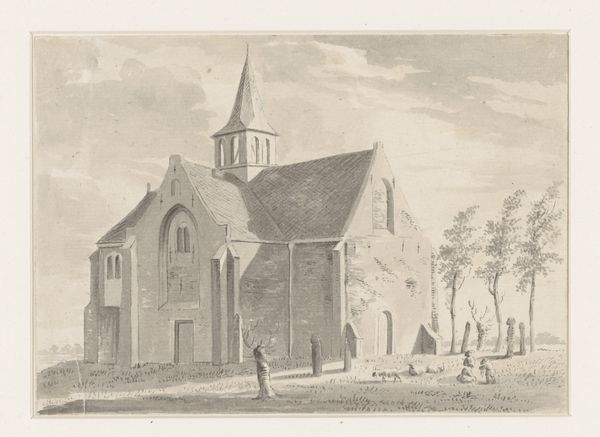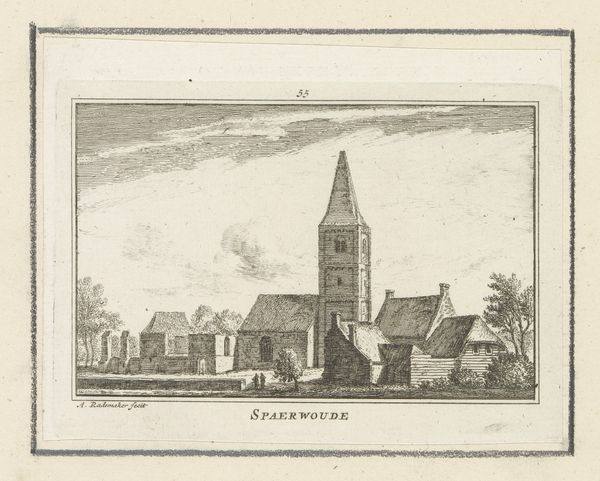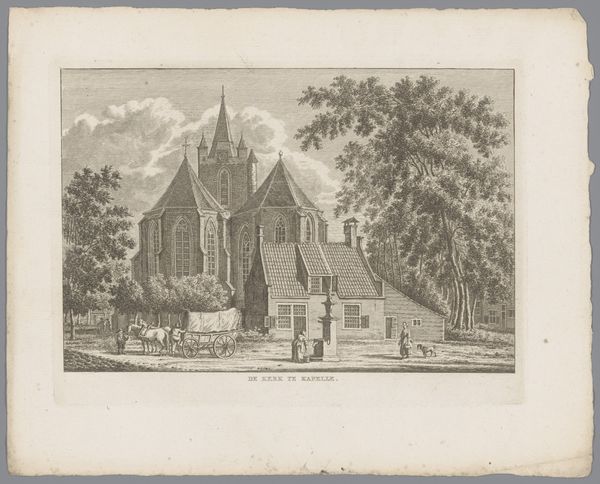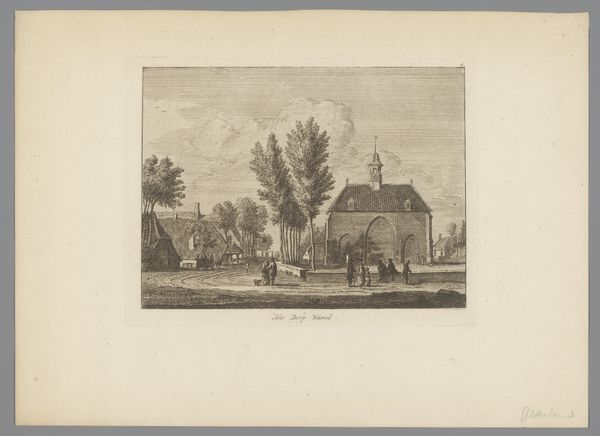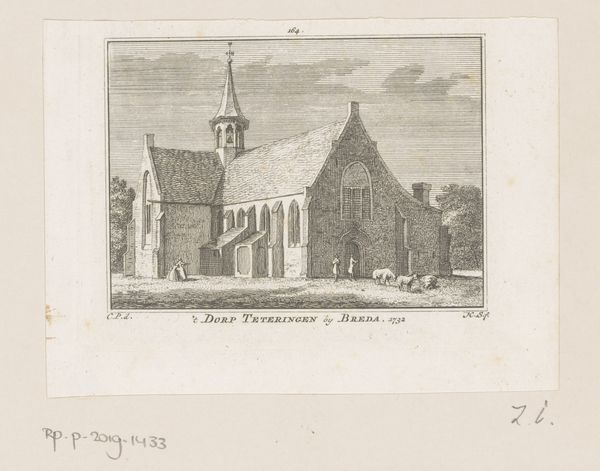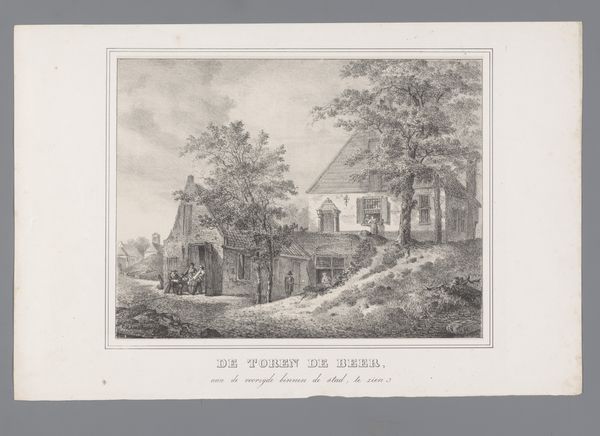
print, etching, architecture
#
neoclacissism
# print
#
etching
#
landscape
#
architecture
#
monochrome
Dimensions: height 234 mm, width 277 mm
Copyright: Rijks Museum: Open Domain
Curator: This print from the period of 1829 to 1839 is entitled "Kerk te Doorn," or Church at Doorn, made by Theodoor Soeterik. Editor: There’s such tranquility about it; that etched line really softens the imposing structure. I can almost feel the rough texture of that paper, holding that level of detail is quite masterful. Curator: Etching lends itself to detail. Soeterik captured this church in Doorn, Netherlands during a time when Neoclassicism was shaping architectural aesthetics, reflecting stability and order during a period of societal transformation after the Napoleonic era. Churches especially served not only religious, but important social and civic functions too. Editor: And look at that line work, the density he achieves… Makes me think about the labor. Each line carefully etched, acid bit by bit removing the material… and how this image would be reproduced. Its existence hinged on process and repeatability, its inherent to a print's existence. The final result would always be tied to this initial act. Curator: Right, the choice of a church—it's fascinating how these buildings also project ideals, the desired social values of the era and also its stability. Note how the figures are depicted. What do you see there? Editor: Those figures near the front look so understated almost absorbed by nature! Like pieces of material indistinguishable from it all and simultaneously adding a scale dimension…it’s cleverly understated to keep our eye on the imposing church but simultaneously speaks to those quiet material narratives we’ve left behind. Curator: Exactly! It's all incredibly purposeful; the architecture dominating but the landscape reflecting daily life still in balance with it. The image makes me consider not only the history of the Church at Doorn but its public image— how images shape our understanding of religious power, community, and social order throughout that century. Editor: So, an image reliant on mass manufacturing… which in turn shapes public values, I am convinced all those etches created something monumental and timeless…it transcends being just a monochrome replication from some Dutch church from Doorn. Curator: Indeed; its testament lies in understanding its creation. The subtle, potent details woven throughout its societal presence long before and even now, its echoes ripple.
Comments
No comments
Be the first to comment and join the conversation on the ultimate creative platform.
